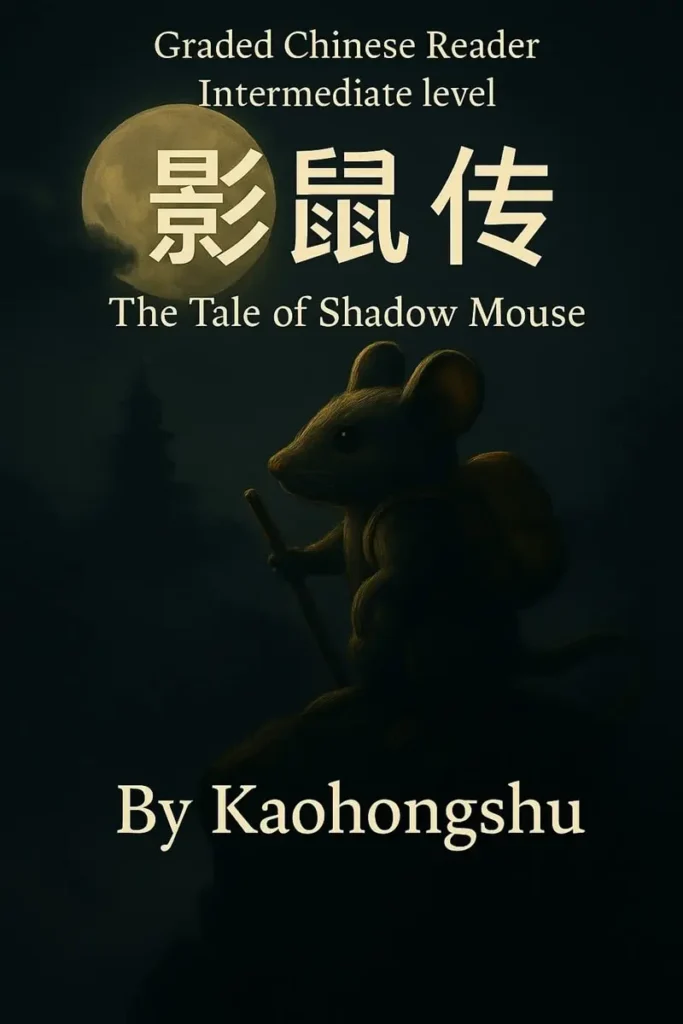Since ChatGPT knows everything, I asked the AI-tool for its best learning advice for Chinese learners. Not just random learning advice, but broken down into learning tips for beginners, intermediate and advanced learners. The results can be taken seriously. Find out which learning advice ChatGPT has in store for your current language level.
ChatGPT’s Chinese learning tips for beginners
I asked ChatGPT for 5 tips focused on people starting out to learn the Chinese language. Let’s have a look what the AI-oracle came up with:
- Master the tones: Chinese is a tonal language, which means that the meaning of a word can change based on the tone used. Spend time practicing and distinguishing between the four tones (five if you count the neutral tone), and make sure you can produce them accurately. Listening to native speakers and mimicking their tones can be very helpful.
- Focus on characters and pinyin: Chinese characters can seem daunting at first, but they are essential for understanding written Chinese. Start by learning the most common characters and their meanings. At the same time, familiarize yourself with pinyin, the system used to transcribe Chinese characters into the Latin alphabet. Knowing pinyin will help you with pronunciation and input methods when typing on a computer or smartphone.
- Immerse yourself in the language: Surround yourself with Chinese as much as possible. Listen to Chinese music, watch Chinese movies and TV shows, and try to engage in conversations with native speakers if you have the opportunity. Immersion is one of the most effective ways to improve your language skills and get a feel for natural speech patterns.
- Practice speaking and writing: Don’t be afraid to make mistakes when speaking or writing Chinese. Practice speaking aloud, even if it’s just repeating phrases from a textbook or language app. Writing characters by hand can also help reinforce your memory and understanding of the language’s structure. Find a language exchange partner or tutor to practice speaking with regularly.
- Be consistent and patient: Learning Chinese takes time and dedication, so be patient with yourself. Set aside regular time each day to study and practice, even if it’s just for a short period. Consistency is key to making progress, so try to make learning Chinese a part of your daily routine.
My comments
ChatGPT gives pretty solid advice – especially the first point “master the tones” I couldn’t agree more with, since this is probably one of the most challenging and underestimated things to tackle when learning Chinese. The same goes for immersion, speaking aloud, language exchange partners, patience and consistency – all valid points. But the devil is in the details as they say:
Characters & pinyin: ChatGPT seems to suggest to study both characters and pinyin right from the start. I can’t say it’s completely wrong, but for most learners it makes more sense to focus on pinyin, tones and pronunciation first. After all, learning characters gets easier, once you have developed a basic vocabulary and first feeling for the language.
Immersion: yes, you can’t spend enough time absorbing authentic speech, but just anything? For efficiency I would recommend a certain degree of comprehensive input as well.
Practice handwriting: surely handwriting plays an important part in deepening one’s understanding for how characters are structured, but I think you have to ask yourself how important handwriting is for you. Because learning handwriting consumes an insane amount of time that you could be spending on other skills like speaking and listening. You might be perfectly happy and satisfied simply using pinyin to write hanzi on your smartphone. That’s something to consider.
Reading: ChatGPT didn’t explicitly mention reading which is kind of strange. Personally I think it makes a lot of sense to start reading after ‘pinyin & tones base camp’ – meaning reading mostly Chinese graded readers and textbooks. This is the only way to attain reading fluency that qualifies learners for more intermediate stuff. Naturally, it depends on your learning goals which priority reading gets over other activities.
ChatGPT’s Chinese learning tips for intermediate learners
Now we come to the intermediate level tips. ChatGPT acknowledges that moving from an intermediate to an advanced level in Chinese requires a more nuanced approach to learning:
- Expand your vocabulary strategically: At the intermediate level, you likely have a solid foundation of vocabulary. Focus on expanding your vocabulary in specific areas of interest or professional relevance. Read books, articles, or watch videos related to your interests in Chinese. Keep a vocabulary journal and review new words regularly to reinforce your learning.
- Deepen your understanding of grammar and sentence structure: While you may already have a grasp of basic grammar, advancing to a higher level requires a deeper understanding of sentence structure and more complex grammatical patterns. Work through advanced grammar textbooks or online resources that explain intricate grammatical nuances. Analyze sentences from native-level texts to understand how grammar is used in context.
- Practice active listening and shadowing: Active listening involves focusing on understanding spoken Chinese while actively engaging with the content. Listen to podcasts, news broadcasts, or audio materials at a native level. Try to identify key words, phrases, and grammatical structures. Shadowing is the technique of repeating what you hear immediately after the speaker, mimicking their pronunciation and intonation. This helps improve your fluency and accent.
- Engage with authentic materials: Challenge yourself with authentic Chinese materials such as newspapers, novels, TV shows, and Chinese movie classics. These resources expose you to real-life language usage, colloquial expressions, and cultural nuances. Don’t worry if you don’t understand everything at first; the goal is to expose yourself to diverse linguistic contexts and gradually improve your comprehension skills.
- Seek opportunities for meaningful communication: Actively seek out opportunities to engage in meaningful conversations with native speakers or fellow learners at a higher proficiency level. Join language exchange groups, attend language meetups, or participate in online forums or discussion boards where you can practice expressing your thoughts in Chinese. Constructive feedback from others will help you identify areas for improvement and refine your language skills.
My comments
Again, these are highly useful tips and I don’t have much to add. Except that engaging with native content might be overkill at times, depending on your level. Novels and newspapers can be difficult and discouraging to read, although the general direction towards native content is good. ChatGPT does assume quite an amount of autonomous learning abilities which I like (it’s the main topic of this blog after all).
ChatGPT’s Chinese learning tips for advanced learners
This is what ChatGPT has to offer for advanced learners. Let’s dive into it:
- Cultural immersion and authenticity: Immerse yourself in Chinese culture as much as possible. This includes consuming authentic Chinese media such as literature, news, films, TV shows, and music. Pay attention to cultural nuances, idiomatic expressions, and societal references embedded in the language. Engaging with native speakers and participating in cultural activities will deepen your understanding and appreciation of the language.
- Refine your pronunciation and intonation: Aim for near-native pronunciation and intonation by closely mimicking native speakers. Pay attention to subtle differences in tones, pitch, rhythm, and stress patterns. Record yourself speaking and compare it with native speakers to identify areas for improvement. Practice speaking in various contexts and scenarios to enhance your fluency and confidence.
- Expand your vocabulary and idiomatic expressions: Continuously expand your vocabulary by learning advanced and specialized terminology relevant to your interests or profession. Study idiomatic expressions, proverbs, and slang used in everyday conversation. Reading extensively in Chinese literature and non-fiction exposes you to diverse vocabulary and enriches your understanding of the language.
- Master complex grammar structures and writing styles: Deepen your knowledge of advanced grammar structures, sentence patterns, and writing styles used in formal and informal contexts. Analyze literature, essays, and academic papers to grasp sophisticated language usage and rhetorical devices. Practice writing essays, articles, and creative pieces to refine your writing skills and develop your own voice in Chinese.
- Seek authentic communication opportunities: Actively seek out opportunities for authentic communication with native speakers or advanced learners. Participate in language exchange programs, discussion groups, or online forums where you can engage in meaningful conversations and receive feedback on your language proficiency. Embrace opportunities to use Chinese in real-life situations, whether it’s traveling, attending events, or networking with professionals.
My comments
Once more, it’s difficult to disagree with ChatGPT. Although there seems to be some overlap with the learning tips for intermediates, these 5 tips focus more on refinement and polishing. From my experience studying German, I’d also recommend writing articles and different kind of texts, since they are the key to advanced language development. But it’s not just that, it’s also “consuming authentic Chinese media such as literature, news, films, TV shows, and music” – not merely to absorb the language, but to access ‘everything Chinese’ on such a level that you can communicate with almost everyone about almost anything. This approach makes absolute sense, once you’re getting near-native. This implies understanding all kinds of nuances that can’t be ignored any longer like idioms, but also cultural and historical references.
Conclusion
“Garbage in, garbage out” has been said about ChatGPT as a language model. Feed it with shitty information and the output will be likewise. When it comes to learning advice for Chinese though, the quality of the answers was convincing and generally helpful. (Of course, you’re free to disagree with me.) Plus, it was generated in a matter of seconds. I don’t doubt that if you add your personal learning situation and goals to the prompt, ChatGPT can give you more valuable tips and even create something like a learning plan.
That being said, ChatGPT can’t replace personal advice in the real sense, let alone speak from actual experience like polyglot Steve Kaufman or language learning expert Benny Lewis who even wrote a book about ‘hacking Mandarin’. Give it a try though, to see what learning advice ChatGPT and similar tools have to offer.










